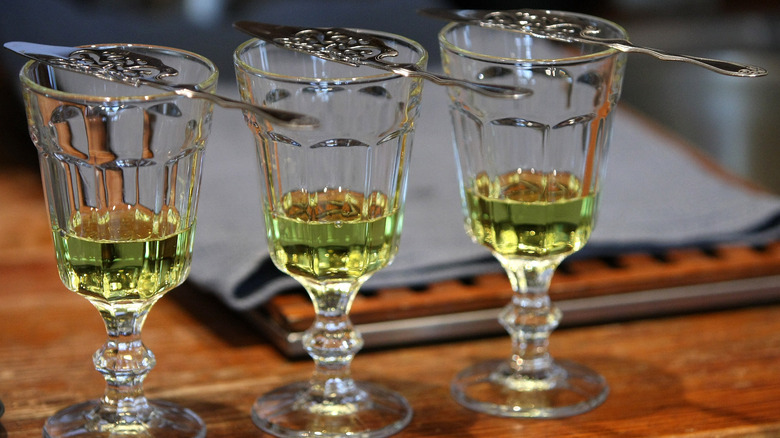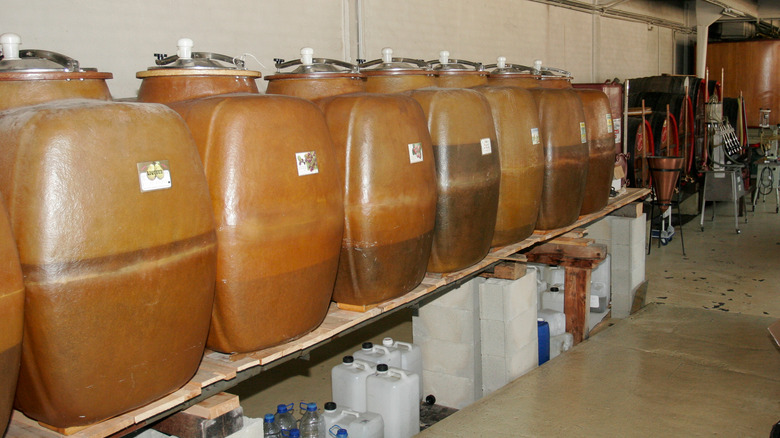The Hoax Behind How Absinthe Got Its Reputation
With an ABV as high as 74%, absinthe is highly intoxicating. And just like any other highly intoxicating beverage, absinthe has shouldered the blame for many an antisocial misstep, and rightly so. Nevertheless, absinthe's reputation as a hallucinogen has been overstated. In fact, scientific study after scientific study has established that absinthe's intoxicating effects are attributable solely to its high alcohol content.
On the other hand, absinthe's reputation is not technically false either. Indeed, history is replete with examples of people who really did experience altered mental states and behavioral changes after consuming what they believed at the time to be the "green fairy," as absinthe is sometimes known. And such stories appear to be neither fabrications nor shared delusions. Instead, a group of chemists from Germany famously pieced together that many individuals who had every reason to believe that it was absinthe in their glass, were not, in fact, drinking absinthe, but rather a cheaply manufactured approximation of absinthe that had been adulterated with other substances — and toxic ones at that.
As these chemists reported in a 2006 academic paper published in the journal, Substance Abuse Treatment, Prevention, and Policy, it was those substances, not the absinthe itself, that produced the hallucinations and behavioral changes for which absinthe became famous — and for which absinthe was banned between 1912 and 2007. In other words, the idea that absinthe was the problem was actually centered on a hoax that was perpetuated by corner-cutting alcohol distillers.
Unscrupulous absinthe manufacturers ruined absinthe for everyone
The seminal recipe for absinthe, which relied heavily on the bitter botanical flavor of the evergreen shrub, wormwood, is attributed to 18th-century Swiss physician, Dr. Pierre Ordinaire, who came up with his elixir for medicinal purposes. However, it caught on as a recreational beverage and grew so popular throughout the 19th century that an alcoholism-like syndrome even came to be named after it: absinthism. And it wasn't long before people began blaming absinthe for "making them" do things they later regretted.
Back then, it was wormwood, and specifically thujone, a substance found in wormwood, that was fingered as the culprit. Thujone does, in fact, cause psychoactive and other effects on the nervous system. The evidence was damning enough that early in the 20th century, absinthe was banned in many countries, including the U.S. Even when absinthe was legalized once again, it was only with restrictions on permitted thujone levels.
But it turns out thujone's psychoactive effects are observable only at far higher doses than absinthe has ever contained. Indeed, as the German scientists mentioned above concluded, it was NOT thujone — or anything else that legitimately belonged in absinthe, that caused the "madness" associated with the green fairy. Rather, the odd behavior and hallucinations sometimes associated with absinthe were caused by "strange or even toxic additives" that didn't belong in absinthe in the first place. These include methanol, antimony, and copper sulfate.
While we're at it, these other absinthe myths deserve debunking too.

